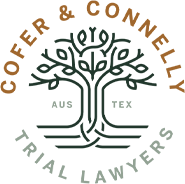The Michael Morton Act, enacted in 2013, revolutionized criminal discovery in Texas. In 1987, Michael Morton was convicted for a crime he did not commit after prosecutors withheld material, exculpatory evidence from Morton's defense team.
Inspired by this miscarriage of justice, the Morton Act overhauled Texas' criminal discovery statute, located in Article 39.14 of the Texas Code of Criminal Procedure. Understanding the Morton Act and how it impacts criminal discovery laws in Texas is vital if you want to know what to expect from criminal defense cases in Texas.
At Cofer & Connelly, PLLC, our team is dedicated to providing Texans with high-quality legal services across criminal defense, family law, and personal injury. Call us at (512) 991-0576 or contact us onlineto schedule a consultation with our team for your case.
How Has Texas Article 39.14 Changed over the Years?
The 2012 revisions to Article 39.14 removed procedural hurdles to obtaining discovery, broadened categories of discoverable evidence, and expanded prosecutors' obligations to disclose. It made disclosure the rule and non-disclosure the exception.
Article 39.14(h) places upon prosecutors a duty to disclose all “exculpatory, impeaching, and mitigation evidence that “tends” to negate guilt or reduce the punishment. However, the most radical change to Texas criminal discovery is perhaps located in the first provision of Article 39.14, subsection A. “Materiality” in Article 39.14(a).
Although the Legislature radically overhauled criminal discovery with the Act's passage, the Legislature retained materiality language used in the prior version of Article 39.14(a). The prior version of Article 39.14(a) was as follows:
“(a) Upon motion of the defendant showing good cause therefor and upon notice to the other parties … the court in which an action is pending shall order the State before or during trial … to produce and permit the inspection and copying … of any … objects or tangible things not privileged, which constitute or contain evidence material to any matter involved in the action and which are in the possession, custody, or control of the State.”
The new, amended version of Article 39.14(a) is as follows:
“(a) [A]s soon as practicable after receiving a timely request from the defendant the state shall produce and permit the inspection and the electronic duplication … of any … objects or other tangible things not otherwise privileged that constitute or contain evidence material to any matter involved in the action and that are in the possession, custody, or control of the State.”
The new version of Article 39.14(a) removes the “good cause” requirement and provides that “material” evidence under Article 39.14(a) should be disclosed upon a “timely request from the defendant.” The new version retains the phrase ”material to any matter involved in the action.” In light of the otherwise radical changes to Article 39.14, prosecutors, judges, and defense attorneys have been left to wonder what “material to any matter in the action” means under the amended Article 39.14(a) in terms of prosecutors' duty to disclose evidence. This question led to the Court of Criminal Appeals' decision in Watkins v. State.
What Was Watkins v. State?
In Navarro County, Watkins was indicted for first-degree felony possession of a controlled substance with intent to deliver, with two enhancement paragraphs alleging prior felony convictions.
Prior to trial, Watkins' attorney sent a discovery request pursuant to Article 39.14(a), which asked for “any other tangible things not otherwise privileged that constitute or contain evidence material to any matter involved in the case.” At trial, the jury convicted Watkins of a lesser-included offense.
During the punishment phase, prosecutors sought to introduce thirty-four exhibits consisting of booking records, pen packets, and judgments and sentences relating to prior felony convictions alleged in the enhancement paragraphs. Watkins' attorney objected on the basis that the exhibits had not been disclosed.
The trial court overruled Watkins' objection and allowed the exhibits into evidence. Watkins appealed the introduction of the exhibits to the Court of Criminal Appeals, which agreed with Watkins' argument that the exhibits were “material” and consequently should have been disclosed prior to trial.
How Has Watkins v. State Changed Criminal Discovery?
The Court's definition of “material” imposes a substantial burden of disclosure on prosecutors. The Watkins holding resolves the question of what constitutes “material” evidence under Article 39.14(a).
Although the Michael Morton Act was codified in 2013, there had been no holding from the state's highest criminal appellate court about the meaning of “material” in the Michael Morton Act until the Watkins decision. The Watkins opinion defines material evidence as evidence “having a logical connection to a consequential fact” in the case. Material evidence is evidence that makes even a “small nudge” to any fact of consequence in action, whether it relates to guilt or punishment.
Watkins clarifies the scope of evidence that must be disclosed pursuant to Article 39.14(a). The exhibits in Watkins' case were “material” to the case and should have been disclosed.
The Difference Between Normative & Subsidiary Facts in Criminal Defense Trials
In the punishment phase of a trial, facts are either normative or subsidiary. A normative fact is a “fact of consequence,” such as that the defendant committed a prior criminal offense. Subsidiary facts are facts that provide at least a small nudge towards “proving or disproving a normative fact.” For example, a subsidiary fact might consist of eyewitness testimony that the defendant committed a prior criminal offense. Watkins' booking records, pen packets, and judgments and sentences were at a minimum subsidiary facts because they provided some nudge towards proving that Watkins committed the prior criminal offenses.
A prosecutor's obligations to disclose under Article 39.14(a) exceed their Brady obligations. Notably, prosecutors' duty to disclose under Article 39.14 extends beyond evidence that is “exculpatory” under Brady v. Maryland. Brady was a landmark case for criminal defendants when the Supreme Court decided it in 1963. In Brady, the Supreme Court recognized a due process violation when the State fails to disclose exculpatory evidence in its possession, meaning evidence that might exonerate the defendant.
The Court's holding in Watkins provides that a prosecutor's duty to disclose evidence under Article 39.14(a) is not limited to evidence that is exculpatory, but rather includes all material evidence.
Furthermore, there is no requirement that the evidence at issue be outcome-determinative to be “material.” A prosecutor is charged with determining what evidence is and is not “material” under Article 39.14(a). The Court specifically rejected an outcome-determinative definition of “materiality” due to among, other reasons, practical concerns with a prosecutor deciding what evidence is outcome-determinative prior to trial.
As the Court noted, “the possible impact of a single piece of evidence [on a case's outcome] is difficult, if not impossible, to guess.”
The Impact of Watkins on Criminal Discovery: Looking Forward
The Court's holding in Watkins clarifies the meaning of “material to any matter involved in the action.” To be material, the evidence only needs to make a “small nudge” towards proving or disproving a consequential fact. Prosecutors are on notice that they are required to disclose any evidence that has a “logical connection to a consequential fact,” upon receipt of a request for disclosure from the defense.
Watkins emphasizes the importance of the defense requesting discovery pursuant to Article 39.14(a) by filing a discovery request that specifically references Article 39.14(a) and incorporates the statute's “materiality” language. The new version of Article 39.14 removed the “good cause” requirement for disclosure in criminal discovery. Under the amended version, any material evidence must be disclosed upon request from the defense, and the defense has no obligation to show “good cause” for the request.
The Court reversed Watkins' conviction because his trial attorney filed a pre-trial discovery request that requested “any other tangible things not otherwise privileged that constitute or contain evidence material to any matter involved in the case.” Thus, the evidence relating to Watkins' extraneous criminal offenses was not exculpatory, and therefore did not fall under the prosecutor's free-standing duty to disclose pursuant to Article 39.14(h).
However, because Watkins' attorney filed a discovery request that mirrored the language of Article 39.14(a), the discovery request triggered the prosecutor's duty to disclose. To this day, we do not know how many people have been negatively affected by a prosecutor who was unwilling to turn over evidence.
Although Michael Morton's case created the spark that led to the new discovery statute, he is one of many who has been to prison, on probation, or otherwise restrained from freedom because of secrecy and misconduct in the discovery process. In light of this ruling, Watkins is added to the list of individuals who have changed the landscape of criminal law in the State of Texas.
At Cofer & Connelly, PLLC, we'll fight to defend your rights in and outside of the courtroom. To schedule a consultation with our team for your case, contact us onlineor via phone at (512) 991-0576.


.2110011417550.jpg)